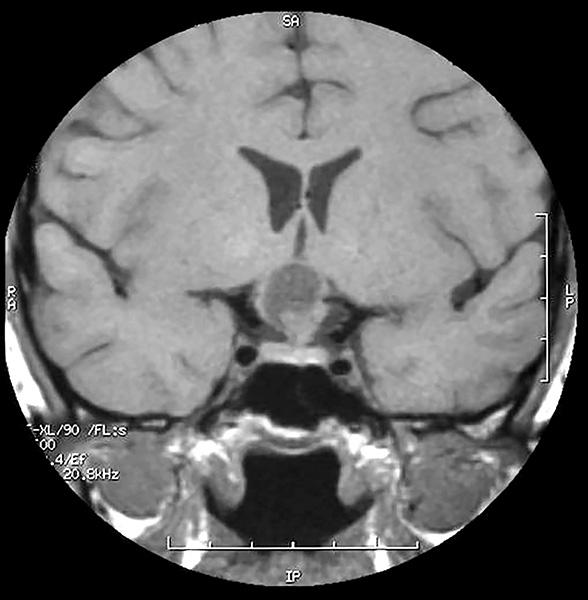A 26-year-old woman was urgently referred to clinic with a 6-week history of retroorbital headaches and deteriorating vision. Her past medical history was unremarkable, although on questioning she admitted that she had recently found it increasingly difficult to cope with her busy job.
On examination, her pulse was 60 beats per minute and regular, and her blood pressure was 110/75 mmHg lying and 90/60 mmHg standing. She was pale and had dry skin. Visual acuities were reduced (6/12 right; 6/24 left), and she had a bitemporal inferior quadrantanopia.
Investigations:
serum sodium132 mmol/L (137C144)
serum potassium4.0 mmol/L (3.5C4.9)
short tetracosactide Synacthen® test (250 micrograms):
serum cortisol (30 min after tetracosactide)185 nmol/L (>550)
plasma follicle-stimulating hormone2.7 U/L
plasma luteinising hormone3.5 U/L
serum prolactin1050 mU/L (<360)
serum thyroid-stimulating hormone0.3 mU/L (0.4C5.0)
serum free T48.0 pmol/L (10.0C22.0)
serum insulin-like growth factor 14.7 nmol/L (7.5C37.3)
MR scan of brainsee image

What is the most likely diagnosis?
A . autoimmune hypophysitis
B . craniopharyngioma
C . non-functioning pituitary adenoma
D . prolactinoma
E . Rathke’s cleft cyst
Answer: B
